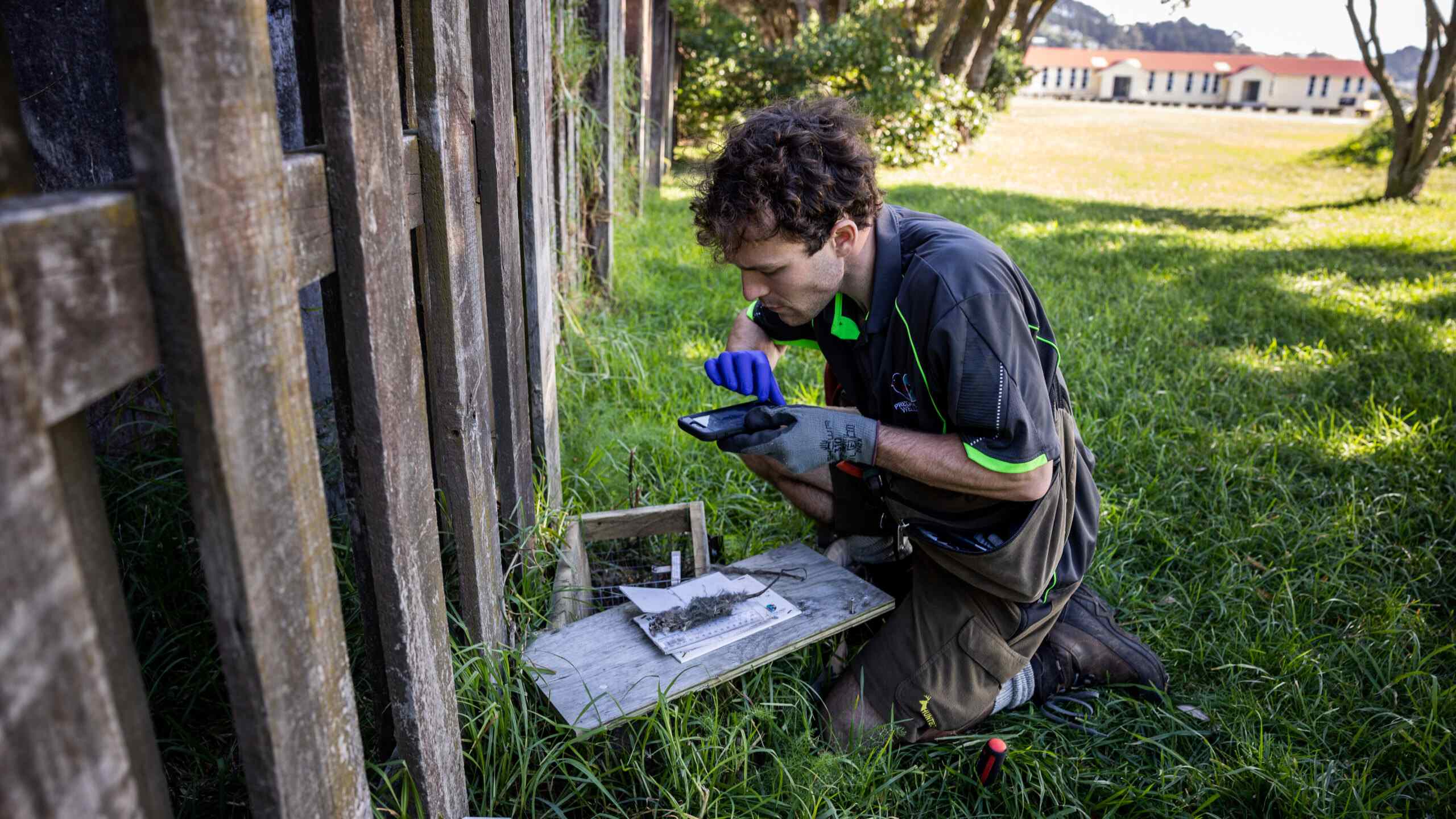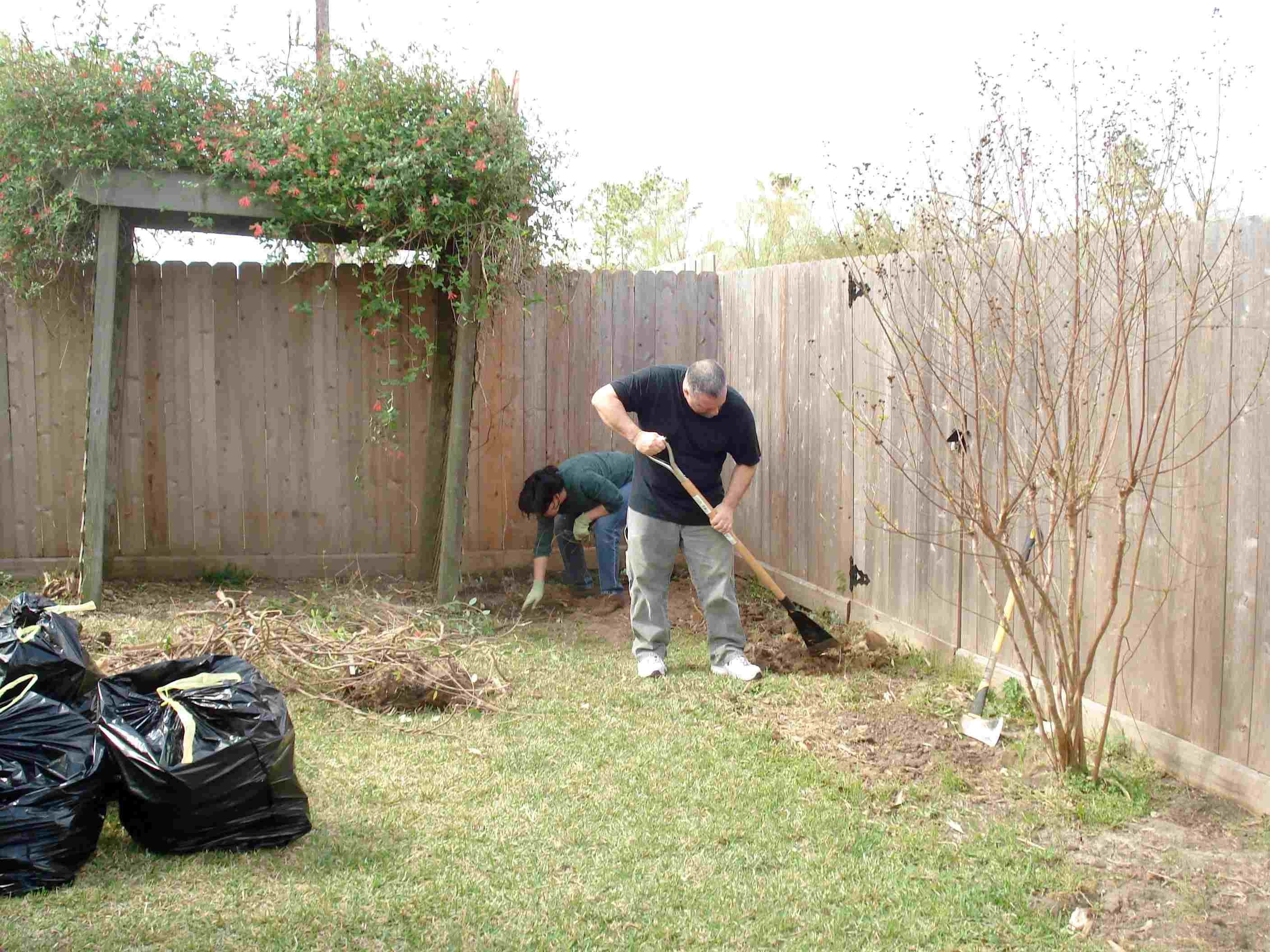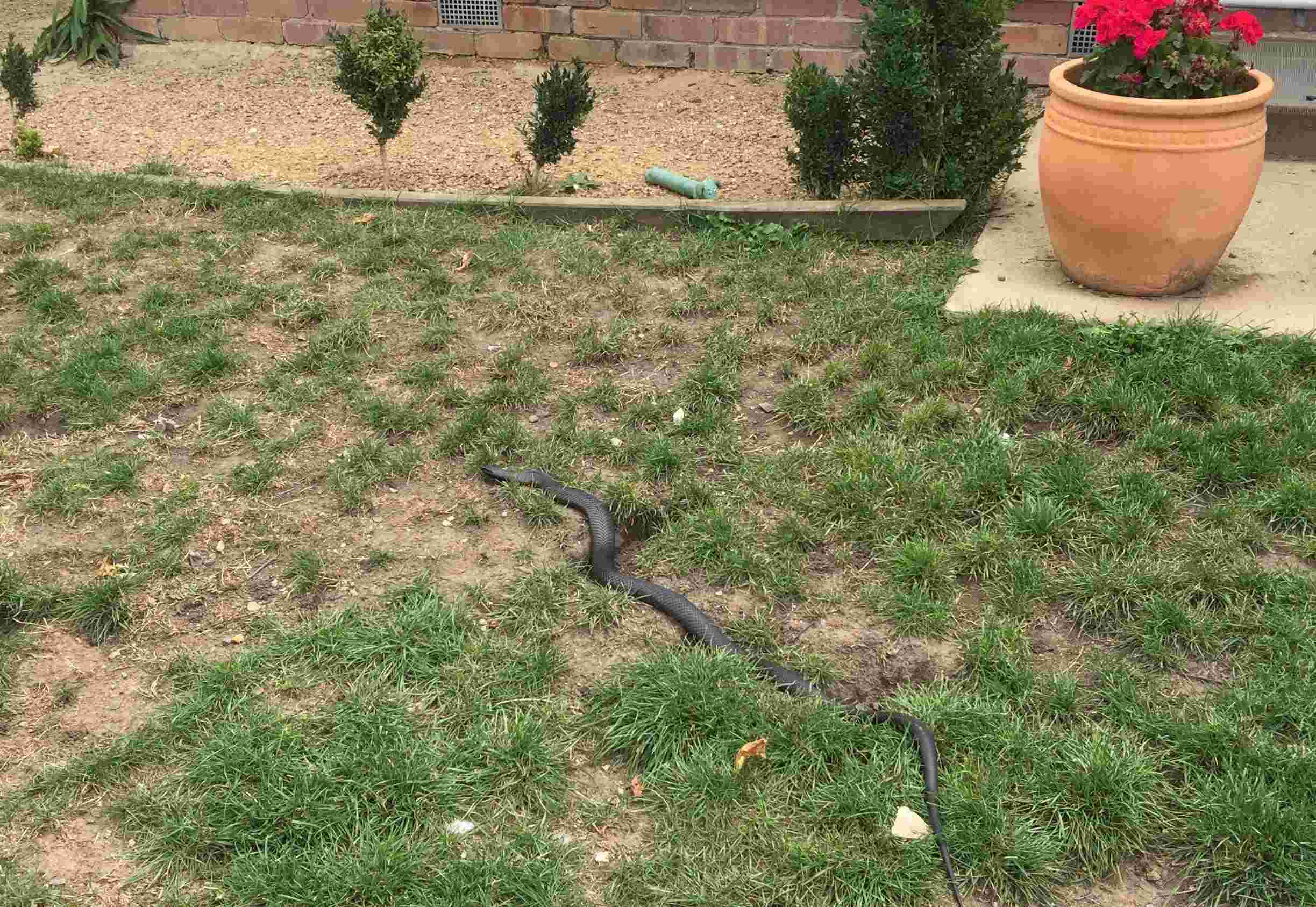Home>Gardening Tips and Tricks>How To Get Rid Of Rats In The Backyard


Gardening Tips and Tricks
How To Get Rid Of Rats In The Backyard
Modified: January 22, 2024
Looking for effective ways to solve the problem of rats in your backyard? Discover proven methods and expert tips to get rid of rats once and for all!
(Many of the links in this article redirect to a specific reviewed product. Your purchase of these products through affiliate links helps to generate commission for Chicagolandgardening.com, at no extra cost. Learn more)
Table of Contents
Introduction
Welcome to our comprehensive guide on how to get rid of rats in your backyard. Rats can be a nuisance, causing damage to your property, spreading diseases, and creating an unsanitary environment. It’s important to address a rat infestation promptly to protect your family and ensure the safety of your outdoor space.
Identifying and eliminating rats can be a challenging task, but with the right knowledge and strategies, you can successfully eliminate these pesky rodents from your backyard. In this article, we will provide you with valuable information on how to identify signs of rat infestation, assess the rat problem in your yard, and implement effective methods to eradicate them.
Before we delve into the solutions, it’s important to understand why rats are attracted to your backyard in the first place. Rats are primarily driven by the availability of food, water, and shelter. Your backyard might offer these elements, making it an ideal habitat for them.
Common attractants for rats in a backyard include open garbage containers, bird feeders, compost piles, exposed pet food, and unattended fruits or vegetables. Additionally, overgrown vegetation and clutter provide hiding spots and shelter for rats.
Now that you have an idea of why rats are drawn to your backyard, let’s move on to the next section, where we will discuss how to identify signs of rat infestation and take necessary measures to eradicate them.
Identifying Signs of Rat Infestation
Before you can effectively tackle a rat problem in your backyard, it’s crucial to be able to identify the signs of rat infestation. By recognizing these signs early on, you can take prompt action to prevent the issue from escalating.
1. Droppings: Rat droppings are a clear indicator of their presence. These small, dark pellets can be found in areas where rats frequent, such as near their nests, along walls, or in corners. Keep an eye out for these droppings, as they resemble large grains of rice.
2. Gnaw Marks: Rats have a constant need to chew to keep their teeth from overgrowing. As a result, they leave behind gnaw marks on various surfaces, including wood, plastic, and even electrical wiring. Look for chewed areas on doors, furniture, or wiring as a sign of rat activity.
3. Grease Trails: Rats have oily fur, which leaves behind grease marks along their regular paths. These smudge marks can often be seen on walls, baseboards, or along floorboards. If you notice these trails in your backyard, it’s a strong indication of rat activity.
4. Nests: Rats create nests using a variety of materials, such as paper, fabric, and plant matter. Look for signs of nesting in hidden areas, such as in piles of debris, under sheds, or in dense vegetation. The nests are often made up of shredded materials and may contain rat droppings.
5. Nocturnal Noises: Rats are nocturnal creatures, so you may hear scratching, scurrying, or squeaking sounds at night. If you consistently hear these noises in your backyard, it’s likely that you have a rat infestation.
6. Burrows: Rats create burrows as shelter and nesting sites. Look for small holes in the ground, usually located near food sources or against walls. These burrows may have fresh soil around the entrance and can lead to extensive tunnel systems.
By keeping an eye out for these signs of rat infestation in your backyard, you can quickly take action to eliminate these unwanted pests. In the next section, we will discuss how to assess the extent of the rat problem in your yard and determine the best course of action to get rid of them.
Assessing the Rat Problem in Your Backyard
Once you have identified the signs of a rat infestation in your backyard, it’s important to assess the extent of the problem before taking action. By understanding the severity of the infestation, you can determine the most suitable methods to address it.
1. Rat Sightings: Take note of how frequently and where you are seeing rats in your backyard. Are they seen only during the nighttime or are they also active during the day? This will give you an indication of the population size and their movement patterns.
2. Damage: Assess the damage caused by rats in your yard. Are they damaging plants, gnawing on structures, or destroying bird feeders? Understanding the extent of the damage will help you prioritize areas that need immediate attention.
3. Rat Droppings: The quantity and location of rat droppings can provide insights into the population density in your backyard. Larger amounts of droppings in certain areas indicate higher concentrations of rats.
4. Nesting Sites: Locate the nests and burrows of rats in your yard. Look for areas with shredded materials, such as shredded paper or fabric, where rats could potentially establish their nests. By identifying these sites, you can target them during your eradication efforts.
5. Food Sources: Evaluate the availability of food sources for rats in your backyard. Are there open garbage containers, unsealed compost piles, or bird feeders that are easily accessible to them? Identifying and removing these attractants will help discourage rat activity.
6. Entry Points: Identify potential entry points that rats are using to access your yard. This could include gaps in fences, cracks in foundations, or holes in walls. By sealing these entry points, you can prevent new rats from entering your backyard.
By conducting a thorough assessment of the rat problem in your backyard, you will be better equipped to implement effective control measures. In the upcoming sections, we will explore various methods to eliminate rats from your yard, ranging from removing attractants and using traps to applying repellents and creating rat-proof fencing.
Removing Attractants from Your Yard
In order to effectively get rid of rats in your backyard, it is crucial to remove any attractants that may be drawing them in. By eliminating potential food sources, water supplies, and shelter, you can make your yard less desirable for rats and discourage them from taking up residence.
1. Secure Garbage and Compost: Rats are attracted to food waste, so it’s essential to secure your garbage bins with tight-fitting lids. Additionally, ensure that your compost pile is properly enclosed and kept away from the immediate vicinity of your house. Avoid composting meat, dairy products, and oily foods, as they can attract rats.
2. Remove Bird Feeders: While bird feeders are enjoyable for birdwatchers, they can also attract rats with their abundant food supply. If you notice rat activity around your bird feeder, consider temporarily removing it or implementing rat-proof feeding mechanisms.
3. Store Pet Food Properly: If you have outdoor pets, make sure to store their food in a sealed container. Leaving pet food out overnight can easily attract rats. Store pet food indoors if possible, or ensure outdoor feeding areas are cleaned and food is removed after your pet has finished eating.
4. Harvest Fruits and Vegetables: Rats are attracted to ripe fruits and vegetables left on trees or on the ground. Regularly harvest these crops and clean up fallen fruits or vegetables promptly to eliminate potential food sources for rats.
5. Trim Vegetation and Remove Clutter: Rats seek shelter in overgrown vegetation and cluttered areas. Trim back bushes, shrubs, and tree branches that are touching your house or providing a hiding place for rats. Remove any debris or clutter in your yard that can serve as potential hiding spots.
6. Eliminate Standing Water: Rats require access to water, so fix any leaks, remove standing water from dishes or buckets, and ensure that your yard is well-drained. Be vigilant for any areas where water may accumulate and take steps to eliminate these sources.
By removing these attractants from your yard, you are effectively making your backyard less appealing to rats. However, keep in mind that simply removing attractants may not completely eliminate an existing rat infestation. In the following sections, we will explore additional methods to catch and repel rats from your backyard.
Using Traps to Catch Rats
Trapping is an effective method for catching and removing rats from your backyard. It allows for targeted control, enabling you to capture and dispose of rats without using harmful chemicals. Here are some key points to consider when using traps to catch rats:
1. Choose the Right Trap: There are various types of traps available, including snap traps, live traps, and glue traps. Snap traps are the most commonly used and effective option for rats. Make sure to select traps specifically designed for rats, as mice traps may not be effective due to the size difference.
2. Place the Traps Strategically: Rat traps should be placed in areas where you have observed rat activity or where you have found signs of infestation. Focus on areas near potential entry points, nesting sites, or along rat runways. Place the traps perpendicular to walls or with the trigger end facing the wall, as rats tend to run along edges.
3. Bait the Traps: Use attractants such as peanut butter, dried fruits, or bacon as bait to lure rats into the traps. Secure the bait on the trigger of the snap trap or place it at the back of a live trap. Check and refresh the bait regularly to ensure its effectiveness.
4. Check the Traps Frequently: It’s crucial to check the traps frequently, ideally every 24 hours, to remove any trapped rats. Rats caught in snap traps should be disposed of in a sealed bag and discarded in an outdoor trash bin. For live traps, release the rats far away from your property to prevent their return.
5. Increase the Number of Traps: If you have a significant rat infestation, it may be necessary to increase the number of traps in your backyard. Place multiple traps in different locations to maximize your chances of catching rats. Continue trapping until no more rats are caught for several consecutive days.
6. Safety Precautions: When handling traps, always wear gloves to avoid direct contact with the rats or their droppings, as they can carry diseases. Follow the manufacturer’s instructions for setting and disposing of the traps safely.
Trapping can be an effective way to control rat populations in your backyard. It is important to be persistent and patient when using trapping methods, as it may take time to successfully catch the rats. In the next section, we will explore the use of rat repellents as an additional measure to deter rats from invading your outdoor space.
Applying Rat Repellents
Rat repellents can be a useful tool in deterring rats from your backyard. These repellents work by emitting strong scents or utilizing natural substances that rats find unpleasant, causing them to seek alternative areas to inhabit. Here are some common rat repellents and how to apply them effectively:
1. Strong-Scented Repellents: Rats have a keen sense of smell, so using repellents with strong odors can discourage them from entering your yard. Examples include peppermint oil, ammonia, or vinegar. Soak cotton balls in these substances and place them in areas where rat activity is observed or near potential entry points.
2. Natural Repellents: Certain natural substances have properties that rats find repulsive. Cayenne pepper flakes, garlic, or predator urine (e.g., from foxes or coyotes) can be sprinkled around the perimeter of your yard or near rat-prone areas. Rats generally avoid these substances and will seek out alternative locations.
3. Ultrasonic Repellents: Ultrasonic devices emit high-frequency sound waves that are inaudible to humans but are irritating to rats. These devices can be placed in your backyard, emitting sound waves that deter rats from staying in the vicinity. However, it’s important to note that the effectiveness of ultrasonic repellents can vary.
4. Electronic Repellents: Electronic repellents use a combination of ultrasonic sound waves, LED lights, or vibrations to repel rats. These devices are often solar-powered and can be placed around your yard to create a deterrent zone. Electronic repellents have mixed reviews in terms of effectiveness, so it’s important to research and choose a reputable product.
5. Natural Predators: Encouraging natural predators of rats, such as owls, hawks, or cats, can help control the rat population in your yard. Providing nesting boxes or perches for birds of prey can attract them to your area. If you have a pet cat, allowing it access to your yard can also deter rats from visiting.
6. Rotate Repellents: Rats can become accustomed to the scent of repellents over time. To prevent habituation, it can be beneficial to rotate different types of repellents every few weeks or alternate their locations. This will keep the rats guessing and make it less likely for them to become tolerant of the repellents.
Remember, rat repellents are not always foolproof and may only provide temporary relief. It’s important to combine repellent methods with other control strategies, such as removing attractants and using traps, for a more comprehensive approach to rat management.
In the next section, we will explore the importance of creating a rat-proof fencing system to keep these rodents out of your backyard.
Creating a Rat-Proof Fencing
Creating a rat-proof fencing system can help prevent rats from entering your yard, reducing the chances of infestation. By implementing a few key measures, you can effectively keep rats out and safeguard your outdoor space. Here are some tips for creating a rat-proof fencing:
1. Choose the Right Material: Select fencing materials that rats cannot easily chew through, such as metal hardware cloth or wire mesh with small gaps. Avoid using materials like wood or plastic that rats can gnaw through to gain access to your yard.
2. Bury the Fence: To prevent rats from burrowing under the fence, bury the bottom portion of the fencing material at least 12 inches into the ground. This creates a barrier that rats cannot easily dig through.
3. Install a Barrier Above Ground: Attach an additional barrier on top of the fencing material, extending at least 12 inches above ground level. This prevents rats from climbing or jumping over the fence to gain entry into your yard.
4. Seal Any Gaps: Inspect the perimeter of your fence for any gaps or openings that rats could potentially squeeze through. Use steel wool or caulk to seal these gaps, ensuring there are no entry points for rats to exploit.
5. Keep Vegetation Away: Trim back any branches or vegetation that are close to or touching your fence, as rats can use them as a launching pad to jump over the barrier. Maintaining a clean and clear space around the fence creates an additional obstacle for rats.
6. Maintain Vigilance: Regularly inspect your fencing system for any signs of damage or deterioration. Repair or replace any compromised sections promptly to ensure the continued effectiveness of the rat-proof barrier.
7. Secure Gates and Entry Points: Pay special attention to gate areas and other entry points, as these can be weak spots for rats to breach. Install self-closing and self-locking mechanisms on gates to prevent the accidental entrance of rats.
By implementing these measures, you can create a strong and effective rat-proof fencing system for your backyard. However, it’s important to remember that rats are agile and persistent creatures. It’s crucial to combine a rat-proof fence with other control methods, such as removing attractants and using traps, for a comprehensive approach to rat management.
In the next section, we will discuss the option of seeking professional help if you are facing a severe or persistent rat infestation in your backyard.
Seeking Professional Help
If you are dealing with a severe or persistent rat infestation in your backyard, it may be necessary to seek professional help. Pest control professionals have the training, expertise, and specialized tools to effectively address rat problems and ensure long-term eradication. Here are some key reasons why you should consider seeking professional help:
1. Expert Knowledge: Pest control professionals have extensive knowledge of rat behavior, their nesting habits, and the most effective methods for eradication. They can accurately assess the extent of the infestation and develop a customized plan to address the problem.
2. Integrated Pest Management: Professionals use an integrated pest management (IPM) approach, which combines various strategies such as trapping, baiting, and exclusion techniques. This comprehensive approach targets the entire rat population and prevents future infestations.
3. Safety: Handling rat infestations on your own can pose risks to your health and safety. Pest control professionals are trained in the proper use of chemical treatments and know how to handle rats safely. They also have access to commercial-grade products that are more effective than over-the-counter options.
4. Saves Time and Effort: Dealing with a rat infestation requires time, effort, and ongoing monitoring. By hiring professionals, you can save yourself the hassle of trying to solve the problem yourself and ensure that it is handled efficiently and effectively.
5. Long-Term Prevention: Pest control professionals not only eliminate current rat infestations but also provide recommendations and techniques for long-term prevention. They can identify potential entry points, advise on landscaping modifications, and help you implement preventive measures to minimize the risk of future infestations.
6. Legal and Ethical Compliance: Pest control professionals are knowledgeable about local regulations and guidelines regarding rat control. They abide by ethical practices and ensure that their methods are safe for the environment, your family, and your pets.
When seeking professional help, it’s important to choose a reputable pest control company with a proven track record in rat control. Research their qualifications, read reviews, and request quotes from multiple providers to make an informed decision.
Remember, whether you decide to seek professional help or tackle the infestation yourself, it’s essential to address a rat problem promptly to protect your family, prevent property damage, and maintain a rat-free environment in your backyard.
In the next section, we will wrap up this comprehensive guide on getting rid of rats in your backyard with a summary of key takeaways and final tips for prevention.
Conclusion
Dealing with a rat infestation in your backyard can be a challenging and frustrating experience. However, by following the steps outlined in this comprehensive guide, you can effectively get rid of rats and create a rat-free environment. Let’s recap the key takeaways:
1. Identify the Signs: Be vigilant in identifying signs of rat infestation, including droppings, gnaw marks, grease trails, nests, nocturnal noises, and burrows.
2. Assess the Problem: Evaluate the severity of the infestation and identify the areas where rats are active or prone to nesting.
3. Remove Attractants: Eliminate food sources, secure garbage and compost, remove bird feeders, store pet food properly, and harvest fruits and vegetables promptly.
4. Use Traps: Choose and set up traps strategically to catch rats, checking them regularly and disposing of trapped rats safely.
5. Apply Rat Repellents: Utilize strong-scented repellents, natural deterrents, ultrasonic or electronic repellents, and natural predators to deter rats from your yard.
6. Create a Rat-Proof Fence: Construct a rat-proof fencing system using appropriate materials, burying the fence, sealing gaps, removing vegetation, and securing entry points.
7. Consider Professional Help: If the rat infestation persists or is severe, seeking professional pest control assistance can ensure effective eradication and long-term prevention.
Remember to always prioritize safety when dealing with rats. Wear gloves when handling traps or cleaning areas with rat droppings, and follow proper disposal methods.
By being proactive in rat control and implementing preventive measures, you can minimize the risk of future infestations. Regularly inspect your yard, maintain cleanliness, and promptly address any potential attractants or entry points.
We hope that this guide has provided you with valuable insights and practical steps to combat rat infestations in your backyard. Remember, early detection and swift action are key to successfully getting rid of rats and ensuring a rat-free outdoor space for you and your family to enjoy.









